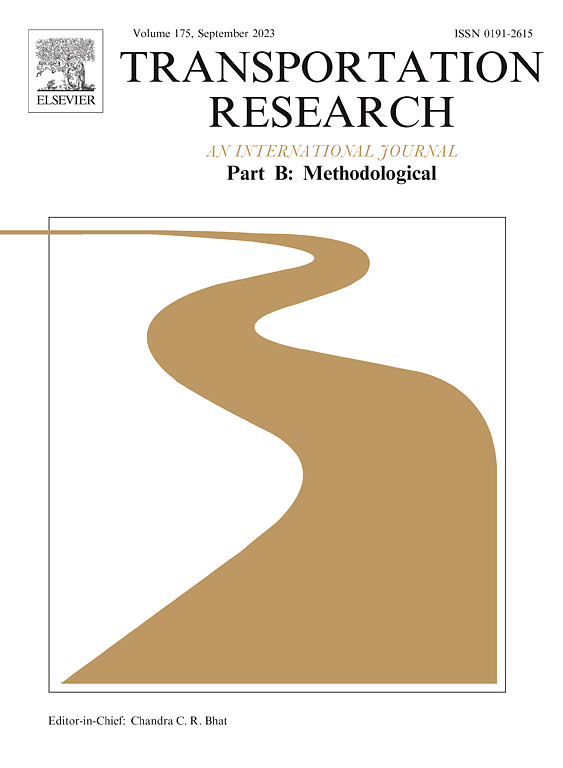考虑信息搜索过程的随机效用最大化模型
IF 6.3
1区 工程技术
Q1 ECONOMICS
引用次数: 0
摘要
离散选择分析旨在理解和预测决策者的行为,这一目标在包括交通运输在内的多个学科中都至关重要。这种类型的分析主要依赖于偏好的静态表示,主要是通过随机效用最大化(RUM)模型,因为它易于实现,经济可解释性和统计形式。然而,该模型假设个人拥有关于备选方案所有属性的完整信息,并且他们可以即时处理和回忆这些信息,这可能与实际的人类行为不一致。相比之下,数学心理学的决策场理论(DFT)模型明确地在决策过程中纳入了对属性和回忆效应的反复审查,这使得它能够模拟注意权重,但缺乏微观经济学的可解释性和明确的统计参数识别。本文介绍了RUM-DFT模型,该模型旨在整合两种方法的优势。通过蒙特卡罗模拟,所提出的模型被证明能够:(i)恢复与审议过程相关的参数,(ii)复制在实践中观察到的审议过程中公用事业的动态行为,(iii)通过估计可用于计算边际间接效用的系数来保持经济可解释性,以及(iv)强调使用忽略数据生成过程真实动态的RUM模型的陷阱。瑞士地铁案例研究也被用于使用真实世界数据集评估RUM-DFT模型,证明了所提出模型的可行性和优越的拟合优度。本文章由计算机程序翻译,如有差异,请以英文原文为准。
A random utility maximisation model considering the information search process
Discrete choice analysis aims to understand and predict decision-makers’ behaviour, a goal that is crucial across several disciplines, including transportation. This type of analysis has relied predominantly on static representations of preferences, principally through the Random Utility Maximisation (RUM) model, due to its ease of implementation, economic interpretability, and statistical formality. However, this model assumes that individuals possess complete information about all attributes of alternatives and that they can process and recall this information instantaneously, which may not align with actual human behaviour. In contrast, the Decision Field Theory (DFT) model from mathematical psychology explicitly incorporates the repeated scrutiny of attributes and recall effects within the decision-making process, which enables it to model attention weights, but lacks microeconomic interpretability and clear statistical parameter identification. This paper introduces the RUM-DFT model, which seeks to integrate strengths of both approaches. Through Monte Carlo simulations, the proposed model is shown to be able to: (i) recover parameters related to the deliberation process, (ii) replicate the dynamic behaviour of utilities during deliberation as observed in practice, (iii) maintain economic interpretability by estimating coefficients that can be used to calculate the marginal indirect utilities, and (iv) highlight the pitfalls of using a RUM model that disregards the true dynamics of data generation process. The SwissMetro case study is employed also to evaluate the RUM-DFT model using a real-world dataset, demonstrating the viability and superior goodness-of-fit of the proposed model.
求助全文
通过发布文献求助,成功后即可免费获取论文全文。
去求助
来源期刊
CiteScore
12.40
自引率
8.80%
发文量
143
审稿时长
14.1 weeks
期刊介绍:
Transportation Research: Part B publishes papers on all methodological aspects of the subject, particularly those that require mathematical analysis. The general theme of the journal is the development and solution of problems that are adequately motivated to deal with important aspects of the design and/or analysis of transportation systems. Areas covered include: traffic flow; design and analysis of transportation networks; control and scheduling; optimization; queuing theory; logistics; supply chains; development and application of statistical, econometric and mathematical models to address transportation problems; cost models; pricing and/or investment; traveler or shipper behavior; cost-benefit methodologies.

 求助内容:
求助内容: 应助结果提醒方式:
应助结果提醒方式:


